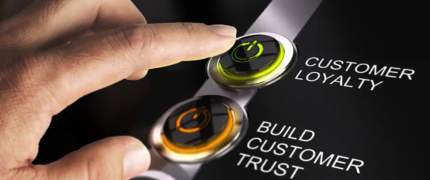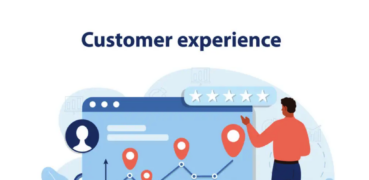Unlocking the Power of Product-Led Sales: A Deep Dive for Product Managers

In today’s rapidly evolving tech landscape, one of the biggest challenges product managers face is how to bridge the gap between product development and sales. The traditional sales-led model, while effective in many B2B industries, is increasingly being complemented or even replaced by Product-Led Growth (PLG) strategies. PLG puts the product itself at the center of the customer journey, making it the primary driver of acquisition, expansion, and retention.
But how does Product-Led Growth intersect with sales, and how can product managers effectively implement a Product-Led Sales (PLS) strategy to boost revenue and customer satisfaction?
In this article, we’ll explore:
- The core principles of Product-Led Sales.
- How PLS differs from traditional sales models.
- Steps to implement a successful PLS strategy.
- Diagrams and frameworks to visualize the process.
What is Product-Led Sales?
Product-Led Sales (PLS) refers to a sales approach where the product itself acts as the main source of customer acquisition and retention, allowing users to experience the value of the product before engaging in the traditional sales process. In this model, the user journey starts with a product trial or freemium experience, which nurtures the user through self-discovery, and then transitions to a human-led sales approach when necessary.
Key Characteristics of Product-Led Sales:
- Product as the Primary Sales Driver: Customers experience the product first (usually through a free trial, freemium, or sandbox environment) before interacting with a sales representative.
- User-Driven Discovery: The product educates users, showcasing its value through features and functionality, rather than relying solely on a sales pitch.
- Data-Informed Sales: PLS emphasizes leveraging user behavior data to guide the sales process. Product usage metrics provide insights into when a user is ready for a sales touchpoint.
- Sales-Assisted Conversion: Once users demonstrate engagement or readiness, the sales team steps in to help close deals, focusing on users who have already experienced the product’s value.
How Product-Led Sales Differs from Traditional Sales Models
In traditional sales-led models, the process usually begins with a marketing or sales representative making contact with potential customers, followed by demos, negotiations, and then onboarding. In contrast, PLS reverses this flow by allowing users to experience the product before engaging with a salesperson.
Here’s a comparative diagram that illustrates the differences:
Traditional Sales Funnel:
- Marketing → Lead generation → Demo → Sales Engagement → Negotiation → Purchase → Onboarding
Product-Led Sales Funnel:
- Product Exposure (Trial/Freemium) → User Activation → User Engagement → Sales Interaction → Purchase
In the PLS model, the product itself acts as the initial “salesperson,” which can significantly reduce the time-to-value for the customer and lower customer acquisition costs. Only after users demonstrate their readiness based on usage data will they be connected with a sales representative.
Why Product-Led Sales Works
- Faster Time to Value: Users get to experience the value of the product immediately, bypassing lengthy sales negotiations.
- Better Qualified Leads: By the time users interact with a sales team, they’ve already experienced the product and are more likely to convert into paying customers.
- Data-Driven Decisions: Product-led companies use product usage data (such as feature adoption, engagement rates, and session frequency) to determine when and how to engage with users for a sales pitch.
- Lower Customer Acquisition Costs: Since users are attracted and converted through the product itself, the cost of lead generation is reduced.
Implementing a Product-Led Sales Strategy
To successfully implement Product-Led Sales, product managers and sales teams need to be closely aligned, working together to leverage data, optimize product experiences, and strategically engage users.
Step 1: Create a Self-Service User Journey
The first step in creating a PLS approach is to offer a frictionless self-service option, such as a free trial or freemium version of your product. This allows users to explore the product on their own terms. Ensure that key product features are easily accessible and guide users toward experiencing the core value of the product.
For example, SaaS tools like Slack and Dropbox let users access the basic product without engaging with sales, allowing them to discover the value before upgrading.
Step 2: Use Product Data to Trigger Sales Engagement
Data is at the heart of Product-Led Sales. Track key product usage metrics to identify high-value prospects. Some data points to consider include:
- Time spent on key features: Indicates user engagement and understanding of the product’s value.
- Usage frequency: Frequent use shows high dependency, signaling readiness for upselling.
- Feature adoption: The number of advanced features users are interacting with suggests a deeper need for the product.
Sales teams should engage with users when these signals indicate that they’re ready for a more in-depth conversation about purchasing or upgrading.
Step 3: Align Sales and Product Teams
Close collaboration between product and sales teams is critical to PLS success. Sales teams should have access to the same product data that product managers and customer success teams are reviewing. Regular alignment meetings ensure that both teams are working toward the same goals and can share insights from different user interactions.
Step 4: Nurture Through Education
While the product plays a significant role in educating users, a nurture strategy that combines product tutorials, webinars, and personalized communication can guide users toward deeper product adoption.
For example, if a user is frequently using one specific feature but hasn’t explored others, sales teams can offer educational materials or webinars that highlight how other features can add value to their workflow.
Diagrams and Visuals to Guide Product-Led Sales
Here’s a breakdown of the key touchpoints in a PLS funnel:
Product Exposure (Trial/Freemium) → User Activation → Sales Trigger → Sales Engagement → Purchase → Customer Success
This visual represents the flow from product-led discovery to a sales-assisted conversion. At each stage, data-driven insights allow sales teams to focus their efforts on the most promising leads, maximizing efficiency.
Another helpful diagram to consider is a Product-Led Sales Metrics Dashboard that includes:
- Activation Rate: Percentage of users who complete key onboarding steps.
- Engagement Rate: Frequency of product usage.
- Expansion Opportunities: Identifying users who are ready for an upsell based on their usage patterns.
Conclusion: The Future of Product-Led Sales
Product-Led Sales is not just a trend, but a logical extension of the way software is being built and consumed. With the right strategy, PLS can not only enhance customer experiences but also improve revenue efficiency by focusing on users who have already seen the value in the product.
By aligning product, sales, and data analytics, you can create a seamless experience that moves customers from exploration to purchase with minimal friction. As the product continues to evolve, so too should your sales strategies, leveraging real-time insights to engage with users at the right time.
By understanding the power of PLS, product managers and sales teams can work together to ensure that the product is not only the driving force behind user acquisition but also a key player in turning users into loyal, paying customers.







